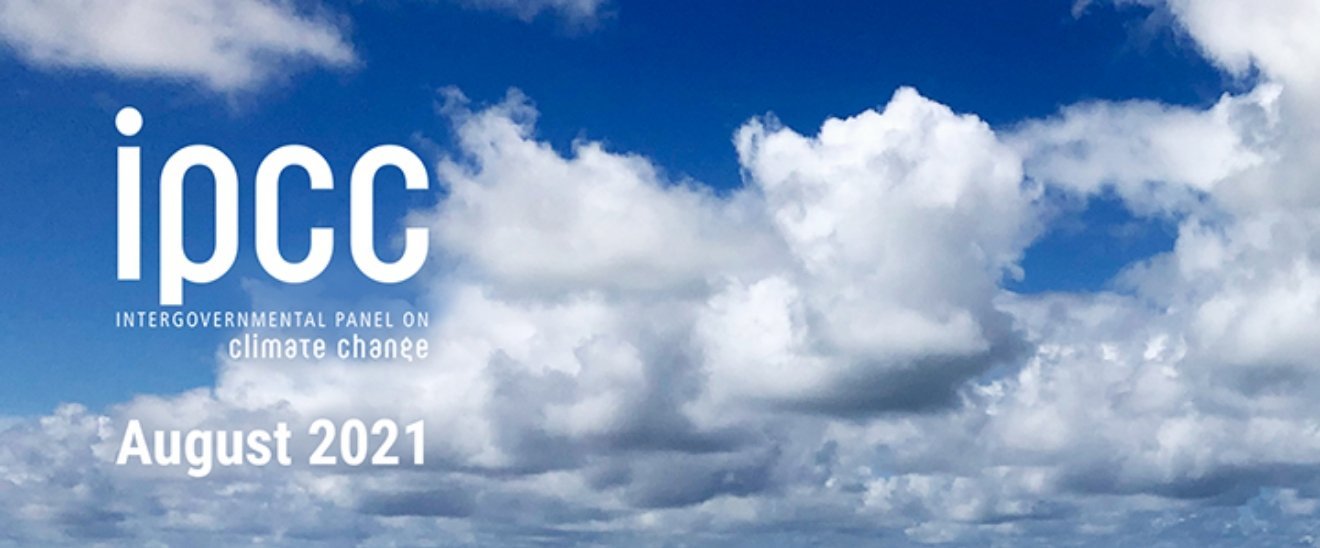The newest IPCC report – a look behind the scenes
Slightly out of the limelight, however, there is another scientific advance in the AR6, indeed a breakthrough, which played a major role in enabling the second of the above-quoted headlines (1) , and which behind the scenes features roles played by both Bjorn Stevens and myself. I am talking about the nothing-less-than-stunning statement “The AR6-assessed best estimate [of equilibrium climate sensitivity] is 3 °C with a likely range of 2.5°C to 4°C (high confidence), compared to 1.5 °C to 4.5 °C in AR5” (2) .
Squint and read again. Then search your memory. Doesn’t the decades-old mantra say: “We haven’t been able to reduce the uncertainty range in equilibrium climate sensitivity (ECS, the long-term global surface warming resulting from a doubling of the CO2 concentration), ever since the Charney report (3) stated it to have the range 1.5 °C to 4.5 °C?” True, there was a brief jitter in AR4, when the lower bound was raised to 2.0 °C, but the AR5 lowered it back to 1.5 °C. The definition of this uncertainty range has become ever more sophisticated (the italicised likely in the above sentence means: with a probability of 66% or higher), but the range itself has stubbornly resisted reduction.
So, what happened so that the AR6 could slash a forty-year-old uncertainty range by one-half (4)? Arguably, it is a single paper that provided the most momentum – but it was not just any paper, not even just any review paper. It was a 92-page assessment of ECS in its own right, led by Steven Sherwood and Mark Webb (5) . This tour-de-force combined evidence from the understanding of feedback processes with the observed instrumental and paleo records. Through the painstaking evaluation of current understanding and the formal (Bayesian) combination of the resulting estimates, Sherwood, Webb, and colleagues provided a much-reduced uncertainty range for ECS, anticipating what AR6 later assessed. Crucially, the ECS as represented by comprehensive climate models did not enter the lines of evidence, enabling the independent evaluation of climate-model ECS against the assessed range.
The paper took an approach that had been outlined in an earlier contribution by its two principal authors together with Bjorn Stevens and Sandrine Bony (6) . To make transparent the inevitably subjective choices that are involved in all statistical estimates, that paper, in turn based on a workshop attended by around 30 specialists (7), advocated exploring the plausibility of various storylines through hypothesis testing. Hence a reader could decide for herself whether she would have come to the same choices or conclusions as the authors.
The workshop in turn had been organised under the auspices of the World Climate Research Programme WCRP, which in 2012 had decided to establish Grand Science Challenge initiatives, each of which picked an important problem in climate science and gave it a boost through a few years of focused attention. This particular – and by all measures extremely successful – Grand Science Challenge was called Clouds, Circulation, and Climate Sensitivity, was led by Sandrine Bony and Bjorn Stevens, and it both initiated and ran the workshop.
We can thus trace an essential accomplishment of the AR6 to the worldwide community of climate researchers and its strategy, some ten years ago, for dealing with a vexing scientific problem. For me personally things have come full-circle now: In my own chapter in AR6, we crucially used the new AR6 assessment of ECS to assess expected future global warming. And when the first set of Grand Science Challenges was defined, I was a member of the steering committee of the WCRP. Although I am not positive, the line of thought “clouds are the largest contributor of uncertainty in climate sensitivity, so let us define a Grand Science Challenge on the connection of these two” sounds naïve enough that it may well have been me who threw that topic into the mix.
What I do remember clearly is that I was asked by the committee chairman to lead the final discussion that settled the Grand Science Challenge topics, in my last session as committee member. The suggested outline for what once had been Clouds and Climate Sensitivity had completely strayed away from that, suggesting instead what to me was becoming “yet another aerosol programme”. While aerosols undoubtedly are important for cloud processes, the crucial connection between clouds and climate sensitivity was threatened to be lost. Hence, I used my power as session chairman to steer the focus back to where I thought it belonged, and in the end the committee approved Clouds, Circulation, and Climate Sensitivity, paving the way for the breakthrough in AR6.
- How this connection works would be the topic for a whole separate essay, but the patient reader can find it in Chapter 4 of the AR6, led by June-Yi Lee and myself.
- This is based on Chapter 7 of the AR6, led by Piers Forster and Trude Storelvmo.
- e.g., www.bnl.gov/envsci/schwartz/charney_report1979.pdf
- Note that the best estimate is the same as the midpoint of the AR5 range, and that the lower bound has moved up by more than the upper bound has come down.
- Sherwood, S. C., and Coauthors, 2020: An assessment of Earth's climate sensitivity using multiple lines of evidence. Reviews of Geophysics, 58, e2019RG000678.
- Stevens, B., S. C. Sherwood, S. Bony, and M. J. Webb, 2016: Prospects for narrowing bounds on Earth's equilibrium climate sensitivity. Earth's Future, 4, 512-522.
- Workshop article: Ringberg 2015
Contact
Prof. Dr. Jochem Marotzke
Max Planck Institute for Meteorology
Phone: +49 (0) 40 41173 311 (Assistant Kornelia Müller)
Email: jochem.marotzke@mpimet.mpg.de

